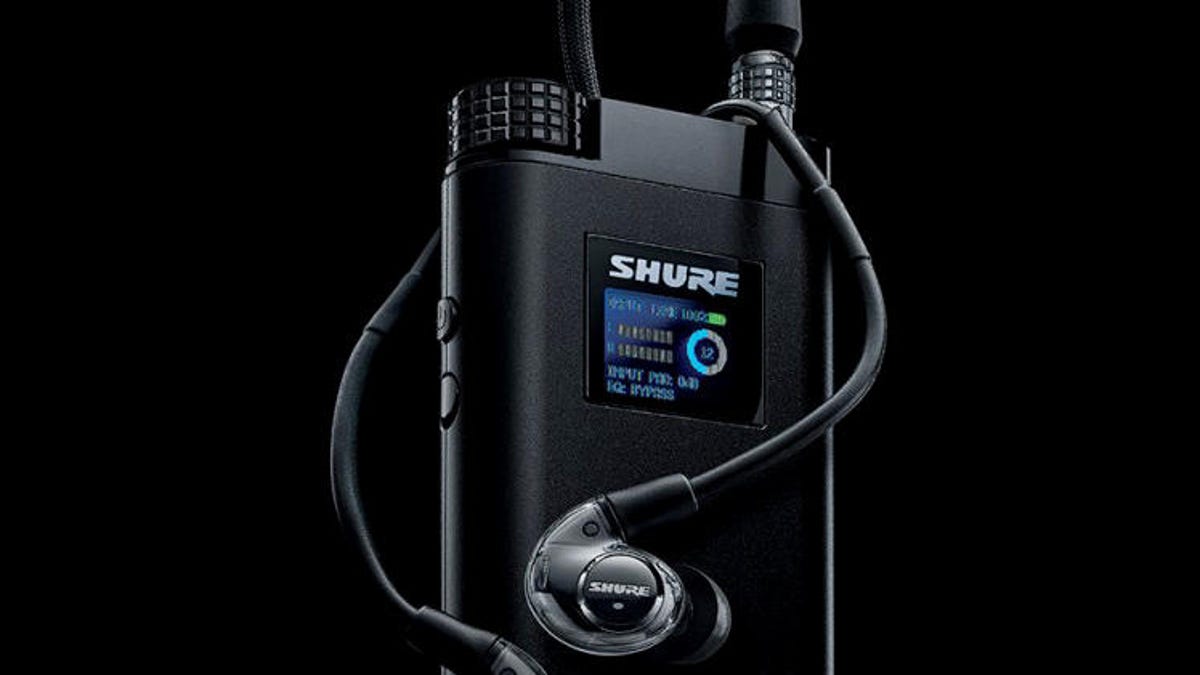 Why You Can Trust CNET
Why You Can Trust CNET Shure's $3,000 KSE1500 headphones make for an ear-opening experience
For well-heeled audiophiles seeking the outer limits of transparency, the Shure KSE1500 electrostatic in-ear headphone is the one to get.
The Shure KSE1500 is like no other headphone in my experience, they sound like a clear portal back to the recording session, there's no better way to put it. Play familiar recordings and they sound a few steps closer to what the microphones "heard" at the session. When you return to other high-end in-ear headphones, the sound is cloudier, more diffuse and less like being there.
The KSE1500 sounds like no other in-ear headphone because it uses completely different technology than any other in-ear headphone. It's the world's first bona-fide electrostatic in-ear headphone. Unlike dynamic and planar magnetic headphones, the KSE1500 uses an ultra lightweight diaphragm suspended between two "stators." They're charged with 200 volts provided by the KSE1500's dedicated compact power amplifier, which also houses a digital converter. The headphone-amp system sells for $2,999 on Amazon in the US. That translates to about £2,549 or AU$3,999.
The amp-converter is a bit thicker than an iPhone but smaller overall. It has two inputs: a 3.5-mm jack and micro-USB you can use to hook it up to a PC, Mac, iOS or Android device. The KSE1500 comes with a USB-to-Apple Lightning cable, so I also tried listening to downloaded Tidal FLAC files on my iPhone 6S. The KSE1500 display screen shows output volume, battery level and EQ setting.
The Shure amp-digital converter build quality feels robust. The headphone's Kevlar-reinforced cable is thicker, stiffer and heavier than most in-ear headphone cables, and it's definitely not user-replaceable. Maximum playtime for the KSE1500's Lithium-Ion battery is 10 hours. The converter's maximum resolution is limited to 96-kHz (24-bit) PCM files -- nowhere as high-resolution as what's available from Astell & Kern or FiiO music players. Shure includes a handsome leather case for the amp-converter.
Listening to Igor Stravinsky conducting his own composition "The Soldier's Tale Suite," the purity of the sound was utterly breathtaking. Pink Floyd's early work, "A Saucer Full of Secrets" was a mind expanding experience. Again, it's the sense of being there, feeling like I'm breathing the same air as the musicians. You just don't get that with other in-ear headphones.
For comparison's sake I brought out an Audeze LCDi4 planar magnetic in-ear headphones and played them with my Astell & Kern Kann portable high-res music player. So while the LCDi4 can be used with any headphone amp, the KSE1500 cannot, it must be used with its dedicated amp, it's a closed system.
The Shure KSE1500 headphone system with an iPhone 6S
With "Catapult" From R.E.M.'s "Murmur" album it was clear the LCDi4 made more and deeper bass, the KSE1500's lows were nimble, but fairly lightweight. Turning on the KSE1500's bass boost EQ setting helped bring up the bass a bit, but it still wasn't a match for the LCDi4.
Since the LCDi4s are open-back headphones, the sound was more spacious than the KSE1500. But since the LCDi4 doesn't do a thing to hush external noise it's pretty useless unless you're listening in a near-silent room. The KSE1500 is a lot better in that regard as it offers a good amount of noise isolation. The LCDi4s weren't as clear and transparent, while the KSE1500s were more like being there. The Shures can also play really loud with ease.
The LCDi4 sounded more dynamically powerful and better suited to rock, the KSE1500 was at its best with acoustic music, but it also excelled with electronica. Neither one can deliver the dynamic punch, scale, and spaciousness of a top-performing full-size headphone
The Shure KSE1500 may be the perfect headphone for well-heeled audiophiles craving the utmost in transparency in the smallest possible size. Its ability to take you deep inside a recording is extraordinary. The sound feels like there's nothing between you and the music.


